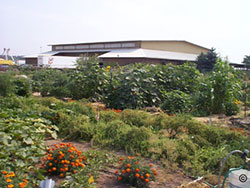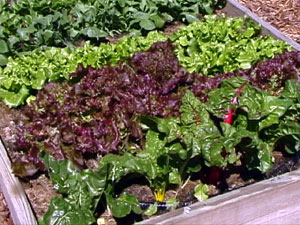Regardless of where one lives, growing conditions are bound to be different from the conditions described in most gardening books. To plan a successful garden, ask some questions. Which vegetables grow well in this area? What soil types are common? Are there unique conditions in the garden to consider, for example, high winds, compacted soils, poor drainage and wet spots? Finally, what are the first and last frost dates, and what is the length of the growing season?
How should I plan how many vegetables to plant?
Plant 100 square feet or less per person in a household, and grow the easiest crops the first year. Later, as skills develop, add more difficult crops such as small fruits and perennial vegetables, and add more area to the garden’s size.
What should I keep in mind when selecting plants?
When selecting plants for a beginner’s garden, keep in mind several suggestions. Plant bush beans for early pods, or pole beans for a later crop with more flavor. Early cabbage varieties produce small heads that taste great cooked or in salads. Try purple or one of the new white cauliflower varieties that don’t require blanching.

How should I organize my garden?
In heavy soils, try half-long varieties of carrots. Grow the disease-resistant long, slender cucumbers for salads. Plant both leaf lettuce and head lettuce for a season-long crop. Plant onions from seed in mid-March using long-day yellow or red varieties. For peas, try the early, dwarf Alaska variety and the later, rambling, sweet type. Plant summer squash on the edge of the garden so it can spread on uncultivated ground, or grow bushy winter squash that take less garden space. Give plants plenty of room to grow so they are not crowded. This is also important for the movement of air and the control of disease. Grow corn in square blocks rather than in rows and try hand pollinating so all of the ears develop well. And, plant half a tomato crop in an early variety and the other half in later maturing variety for continuous harvest.
For more information, see the following Colorado State University Extension fact sheet(s) or Master gardener garden Notes.
- Vegetable Planting Guide
- Vegetable Garden Hints
- Block Style Layout in Raised Bed
- Cucumbers, Pumpkins, Squash and Melons
- Xeriscaping: Trees and Shrubs



